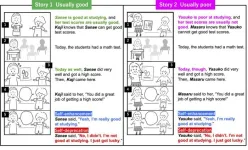Joint Press Release with IPB University, WWF Indonesia, and WWF Japan
<Summary Text>
Appropriate fishery management requires an understanding of the target species' stock dynamics. However, in the Northern Hemisphere, illegal trade and IUU (Illegal, Unreported, and Unregulated) fisheries make the assessment of recruiting glass eels extremely difficult. Contrary, we have successfully collected sufficient data on glass eel fisheries for detailed statistical analysis based on a community-based participatory assessment. This study was conducted by NGOs, experts, and a broad range of stakeholders from both Indonesia and East Asia. This participatory stock assessment has contributed to eel management in Indonesia and opened up the possibility of establishing sustainable glass eel fisheries. It could also improve the data collection of glass eel fisheries worldwide.
Key Findings of the Study
A community-based participatory assessment of glass eel fisheries was conducted by NGOs and experts, in collaboration with fishermen, middlemen, eel farms, retailers, and national and local agencies.
In 2019, more than 3,000 daily fishing practices from approximately 400 fishermen were collected in West Java, Indonesia.
Based on this fisheries data, a sum of the abundance (10,262,840 individuals), the daily natural mortality rate, and the overall exploitation rate (25%) were estimated.
The data collection scheme has been disseminated by local and national agencies to glass eel fishermen in Indonesia.
IUU fisheries and illegal trades have been occurred in countries of the Global North. The participatory approach could potentially improve the data collection of glass eel fisheries worldwide.
<Full Text>
1. Anguillid eels
Anguillid eels (freshwater eels) are among the most commercially important freshwater fish species worldwide, and glass eels have been intensively captured for aquaculture. Although caught and traded worldwide, East Asia is the centre of demand for aquaculture and consumption. Following the decline of the A. japonica (Japanese eel) glass eel catch and the EU A. anguilla (European eel) trade ban in 2010, other regions, such as Southeast Asia, have become increasingly important sources of juvenile Anguilla spp., for both Southeast and East Asian farms. Recent customs trade data have shown substantial shifts in trade patterns related to live eels, especially juveniles. This trade has sometimes shifted to species/populations in Southeast Asia, where little fisheries management exists to ensure a legal and sustainable harvest.
There are currently 19 species/subspecies of freshwater eels in the genus Anguilla. All anguillids are catadromous, spawning in offshore oceanic waters, and their leaf-like leptocephalus larvae migrate to freshwater and estuarine habitats after metamorphosing into ‘glass eels’. They spend various numbers of years in continental waters as ‘yellow eels’ for most of their life, until the onset of sexual maturation. Then, they migrate out of freshwater or estuaries toward their spawning areas in the open ocean as ‘silver eels’.
2. Indonesian Shortfin Eel Conservation Project
The Indonesian Shortfin Eel, A. bicolor bicolor, is farmed and processed in Indonesia and exported to Japan. With the rising demand for tropical eels, the “Indonesian Shortfin Eel Conservation Project” was launched in 2018 by AEON, one of the largest Japanese retailers, in association with PT. Iroha Sidat Indonesia (IROHA), a supplier of the Indonesian Shortfin Eel, along with WWF Indonesia, WWF Japan, and eel experts. This project aimed to improve the glass eel fishery in West Java based on the MSC Fisheries Standard and eel farming operated by IROHA based on the existing ASC Standards for sustainable utilization of eels. Thus, the Fishery Improvement Project (FIP) and Aquaculture Improvement Project (AIP) were launched as the first FIP/AIP projects for anguillid eels worldwide.
Data collection from the glass eel fishery was an important aspect of the action plan for the FIP, aiming to estimate the stock status of the eels and the species composition of the catches. The project team worked on developing a data collection scheme that is high-resolution enough for statistical analysis and management measures.
3. Aims of this study
Appropriate fishery management requires an understanding of the target species' stock dynamics. Fisheries-independent scientific monitoring can provide high-quality data; however, such monitoring is often financially and technically challenging, particularly in the Global South, where stock assessment often relies on fishery data. This situation is more challenging for small-scale fisheries, where catch information is not readily available and collecting reliable fisheries data can be difficult.
In Indonesia, glass eel fisheries are small-scale operations conducted independently by many individuals, making data collection challenging. Therefore, this study aimed to test whether community-based participatory stock assessments could contribute to managing glass eel fisheries.
4. Research Content
The study was conducted in the Cimandiri River Estuary, West Java, Indonesia, where IROHA primarily sourced its aquaculture seed. As this was the first step in developing an assessment scheme, fishery data were collected as the gross catch of glass eels (i.e., not species-specific).
To develop a community-based participatory monitoring scheme for glass eel fisheries, discussions were facilitated among relevant stakeholders (fishermen, middlemen, local and national fishery agencies, NGOs, and experts). From August 2016 to December 2023, more than 30 meetings were held.
The research team contacted one large middleman, 12 small middlemen, and approximately 400 fishermen, all of whom agreed to participate in the data collection scheme. With all middlemen agreeing to data collection, it can be assumed that almost 100% of fishermen in the study area voluntarily collected fishery data. The research team collected data on 3,351 daily fishing practices in the Cimandiri River from 1 January to 9 December 2019.
The glass eel fishery data collected in 2019 were sufficient enough to be analysed using a generalized depletion model. The total sum of the abundance estimates was 10,262,840 individuals, which led to an overall exploitation rate of 24.9 % for glass eel fisheries. The estimated daily natural mortality rate was 0.011 day-1.
5. Outcomes of the Study and Future Directions
The data collection scheme for glass eel fisheries, developed through this participatory research, has been disseminated by local and national agencies to glass eel fishermen in Indonesia and has contributed to facilitating data collection for glass eel fisheries in the country.
Illegal trade and IUU (Illegal, Unreported, and Unregulated) fisheries occur with glass eels worldwide, especially in temperate species such as the American, European, and Japanese eels. This situation makes data collection for glass eel fisheries extremely difficult. However, this study successfully collected glass eel fishery data, based on which we were able to estimate recruitment, natural mortality, and exploitation rates. This community-based participatory stock assessment has contributed to eel management in Indonesia and could improve data collection for glass eel fisheries worldwide.
In the future, this data collection framework can be improved in the following ways. First, a longer coverage time is required - in this study, only one year was included. The second point is the need for better species resolution. In this study, taxon resolution was limited to the genus. Previous studies have reported three anguillid eel species in the Cimandiri River: A. bicolor bicolor, A. marmorata, and A. bengalensis. The data collection scheme should be species-specific, conducting scientific research along with participatory data collection to determine the species composition of glass eels caught by fishermen.
Additionally, for the conservation and sustainable use of anguillid eel species in Indonesia, fisheries data should be collected for glass eels and other life stages, such as yellow and silver eels, to develop a feasible management plan. Furthermore, integrating stakeholders, not only for data collection but also for decision-making, can help improve fishery management.
6. Acknowledgements
First, we appreciate the participation and collaboration of the middlemen and fishermen in the study area. Without their voluntary contribution, this study could not have been conducted. We are grateful to the national and local governments for their assistance in developing the data collection scheme. Finally, it is worth noting that AEON and IROHA initiated this participatory research out of concern for a sustainable supply of glass eels for aquaculture, despite not currently conducting an eel-related business in Indonesia.
The research budget was obtained from Indonesia and Japan, namely, from the National Higher Education Operational Budget (BOPTN), The Indonesia Endowment Funds for Education (LPDP), KAKENHI (grant number 19KK0292), and Chuo University. FAO, AEON CO., LTD., and its affiliate company, AEON TOPVALU CO., LTD., funded research conducted by WWF Japan and WWF Indonesia to improve glass eel fisheries and aquaculture in West Java.
7. Paper Information
Title: Participatory stock assessment in West Java contributes to the management of glass eel fisheries in Indonesia
Authors: Ronny Irawan Wahju (IPB University, Indonesia), Faridz Rizal Fachri (WWF Indonesia), Mohammad Mukhlis Kamal (IPB University, Indonesia), Yu-Jia Lin (Sun Yat-Sen University, Taiwan), Achmad Mustofa (WWF Indonesia), Teo Andri Saputra (WWF Indonesia), Endan Sutendi (WWF Indonesia), Makoto Yoshida (WWF Japan), Shuhei Uematsu (WWF Japan), Kenzo Kaifu (Chuo University, Japan)
Journal: Marine Policy
Publication Date: 22 March 2024
Link: https://www.sciencedirect.com/science/article/abs/pii/S0308597X24001015
8. Contact Information
For research-related inquiries:
Kenzo Kaifu, Faculty of Law, Chuo University
Email: kkaifu001t★g.chuo-u.ac.jp
Please replace★to @ when writing email.
For media inquiries:
Chuo University Public Relations Office
Email: kk-grp★g.chuo-u.ac.jp
Please replace★to @ when writing email.
END





